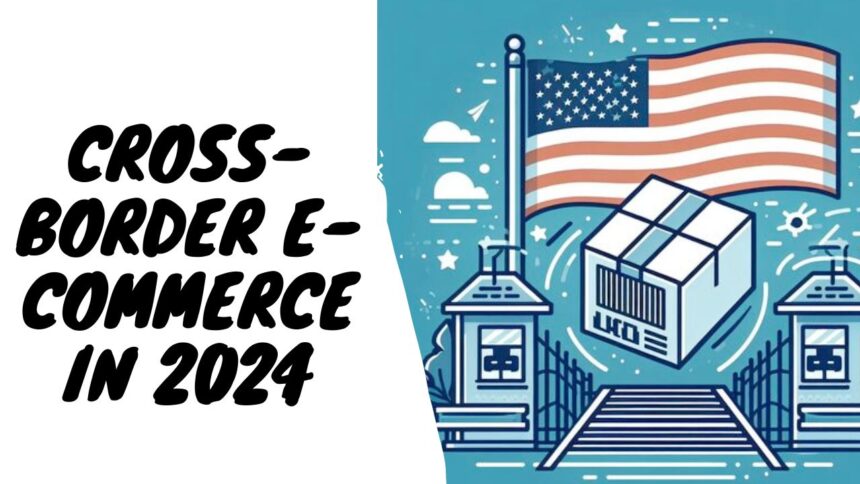Globalization has opened up immense opportunities for businesses to engage in cross-border e-commerce, allowing them to reach customers worldwide. However, this expansion comes with its own set of challenges that can hinder the success of online businesses. From navigating complex international regulations to overcoming language barriers and cultural differences, e-commerce companies face a multitude of obstacles when operating in global markets.
In this blog post, we will discuss some of the key challenges that businesses encounter in cross-border e-commerce and provide strategies for overcoming them. By understanding these obstacles and implementing effective solutions, businesses can successfully expand their online presence across borders and capitalize on the growing opportunities in the global marketplace.
Understanding the Cross-Border E-Commerce Landscape
Key Market Trends and Consumer Behaviors
The cross-border e-commerce landscape is constantly evolving, shaped by various market trends and consumer behaviors. As more consumers embrace online shopping, especially in light of the global pandemic, the e-commerce sector continues to experience significant growth. Key market trends include the rise of mobile shopping, increasing demand for personalized shopping experiences, and the shift towards sustainable and ethical consumer practices.
Consumer behaviors are also influencing the cross-border e-commerce landscape. Today’s consumers prioritize convenience, competitive pricing, and a wide range of product choices when shopping online. Trust and security in online transactions are paramount, leading to the increased popularity of secure payment methods and robust cybersecurity measures in cross-border e-commerce transactions.
Regulatory and Legal Environments
The regulatory and legal environments play a crucial role in shaping the cross-border e-commerce landscape. Different countries have varying laws and regulations governing e-commerce, which can impact cross-border trade. Understanding and complying with these regulations is crucial for e-commerce businesses to operate successfully across borders. Key issues include customs regulations, tax requirements, data protection laws, and consumer rights protections.
Landscape – To navigate the regulatory and legal landscape of cross-border e-commerce successfully, businesses must stay informed about the latest regulatory developments in the countries they operate in. Partnering with legal experts or consultants familiar with international e-commerce laws can help businesses ensure compliance and mitigate legal risks in their cross-border operations.
Addressing Logistics and Supply Chain Complexities
Navigating International Shipping and Customs
Supply chain and logistics complexities are at the forefront of challenges in cross-border e-commerce. Concerning international shipping, factors such as varying regulations, customs procedures, duties, and taxes can significantly impact the flow of goods. Navigating through these intricacies requires a thorough understanding of each country’s import/export rules and a well-established network of reliable carriers and logistics partners.
Optimizing Supply Chain for Global Scale
One key aspect of overcoming supply chain complexities in cross-border e-commerce is to optimize the supply chain for global scale. This involves streamlining processes, leveraging technology for increased visibility, and strategically locating fulfillment centers or warehouses to minimize shipping costs and delivery times. By employing data analytics and automation tools, businesses can ensure greater efficiency and responsiveness in managing their global supply chain operations.
Addressing logistics and supply chain complexities in cross-border e-commerce is vital for ensuring seamless operations and customer satisfaction. By proactively tackling challenges such as international shipping and customs procedures, as well as optimizing the supply chain for global scale, businesses can position themselves for success in the competitive global marketplace.
Overcoming Payment and Currency Issues
Handling Multiple Currencies and Payment Methods
The world of e-commerce knows no borders, and as an online retailer, you may find yourself dealing with customers from various regions, each using their preferred currency and payment method. The key to overcoming this challenge lies in offering flexibility. By integrating a multi-currency payment system, you can provide customers with the convenience of paying in their local currency, thus improving their shopping experience and reducing cart abandonment rates.
Managing Payment Security and Fraud Prevention
Fraudulent activities pose a significant threat to cross-border e-commerce transactions. To mitigate this risk, it is crucial to implement robust payment security measures and fraud prevention tools. By utilizing technologies such as encryption, tokenization, and AI-powered fraud detection systems, you can secure transactions and safeguard sensitive customer data. Additionally, staying updated on the latest trends in payment fraud and continuously monitoring transactions can help identify and prevent fraudulent activities before they cause significant damage to your business.
This chapter sheds light on the importance of implementing secure payment systems and fraud prevention measures in cross-border e-commerce. By prioritizing payment security and staying vigilant against fraud, online retailers can protect their customers’ financial information and build trust, ultimately fostering long-term relationships and driving sustainable business growth.
Navigating Taxation and Import/Export Regulations
Understanding the Framework of International Taxes
Taxes play a significant role in cross-border e-commerce transactions, as they can vary greatly from one country to another. Understanding the international tax framework is crucial for e-commerce businesses looking to expand globally. International taxes can include Value Added Tax (VAT), customs duties, excise taxes, and more. It is important to research and comprehend the tax laws of each country where you conduct business to ensure compliance and avoid unexpected financial implications.
Compliance with Import/Export Laws and Standards
The compliance with import/export laws and standards is a critical aspect of cross-border e-commerce. Each country has its own set of regulations governing the import and export of goods, including product standards, labeling requirements, and restrictions on certain products. Ensuring compliance with these laws is important to avoid customs delays, fines, or even the seizure of goods. Partnering with logistics providers or consultants who specialize in international trade can help navigate the complex landscape of import/export regulations.
Plus, staying informed about changes in import/export laws and standards is vital for the success of your cross-border e-commerce business. Regularly monitoring updates and amendments to regulations will help you adapt your strategies and operations to remain compliant and efficient in your international transactions.
Tackling Language and Cultural Barriers
Localizing Content and Marketing Strategies
Your cross-border e-commerce efforts can greatly benefit from localizing your content and marketing strategies. This involves adapting your website, product listings, and promotional materials to the language and cultural preferences of your target audience in different regions. By speaking their language and understanding their cultural references, you can build trust and credibility with potential customers, leading to increased engagement and conversion rates. Invest in professional translation services and cultural consultants to ensure your content resonates effectively with your international audience.
Cultural Sensitivity and Customer Engagement
Tackling cultural sensitivity in cross-border e-commerce is crucial for establishing a strong connection with your international customers. Conduct thorough research on cultural norms, values, and traditions of the regions you are targeting to avoid any missteps that could alienate potential buyers. Implement cultural sensitivity training for your customer service team to ensure respectful and understanding interactions with customers from diverse backgrounds. Engage with your audience through culturally-relevant content and promotions that demonstrate your commitment to understanding and respecting their unique cultural perspectives.
To enhance customer engagement in cross-border e-commerce, strategies should be tailored to the specific cultural preferences of different regions. This may involve adjusting communication styles, imagery, and even product offerings to better resonate with the local audience. By demonstrating cultural sensitivity and adapting your customer engagement strategies accordingly, you can foster stronger relationships with international customers and differentiate your brand in competitive global markets.
Leveraging Technology for Cross-Border Success
Utilizing E-Commerce Platforms and Tools
To effectively navigate the complexities of cross-border e-commerce, businesses must leverage the right e-commerce platforms and tools. These platforms not only provide a seamless online shopping experience for customers worldwide but also offer features like multi-language support, currency conversion, and international shipping options. Integrating these tools into your e-commerce strategy can help streamline operations and expand your global reach.
Advancements in AI and Machine Learning for Global Trade
One of the most significant advancements in cross-border e-commerce is the integration of AI and machine learning technologies. These tools can help businesses analyze vast amounts of data to identify trends, personalize customer experiences, and predict market demand. By leveraging AI and machine learning for global trade, companies can optimize their supply chain, improve inventory management, and enhance overall efficiency in serving international customers.
With the rapid evolution of technology, businesses can now harness the power of AI and machine learning to overcome challenges in cross-border e-commerce. By utilizing these advanced tools and platforms, companies can stay ahead of the competition and create a seamless shopping experience for customers worldwide.
Building Trust and Reputation in Foreign Markets
Establishing Credibility with International Customers
Credibility is crucial when expanding your e-commerce business across borders. International customers are often hesitant to make purchases from unfamiliar companies due to concerns about payment security, product quality, and reliable shipping. To build credibility, it’s important to showcase trust signals on your website, such as customer reviews, security badges, and clear return policies. Providing transparent information about your company, including your history, team, and values, can also go a long way in establishing trust with international customers.
Managing Customer Service and Building Loyalty
With cross-border e-commerce, managing customer service effectively is key to building loyalty and retention. International customers may have language barriers, different time zones, and varying cultural expectations. By offering multilingual support, localized customer service channels, and prompt responses to inquiries, you can enhance the overall shopping experience for your foreign customers. Personalizing communication and showing appreciation through loyalty programs or exclusive discounts can further strengthen relationships and encourage repeat purchases.
A strong focus on customer service not only resolves issues efficiently but also helps in creating a positive impression that can lead to word-of-mouth recommendations and increased customer satisfaction.
Conclusion
From above, we can see that cross-border e-commerce comes with its fair share of challenges, but with careful planning and execution, these obstacles can be overcome. By addressing issues such as language barriers, cultural differences, and logistics challenges, businesses can successfully expand their reach into international markets.
It is crucial for e-commerce businesses to prioritize customer experience, adapt to local regulations, and invest in robust technology solutions to streamline cross-border operations. With a strategic approach and a commitment to continuous improvement, companies can navigate the complexities of cross-border e-commerce and capitalize on the vast opportunities that international markets have to offer.









